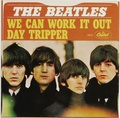This article discusses the styles and influences of Victorian furniture, as well as acknowledging the notable cabinetmakers of the period and the materials that were used. It originally appeared in the March 1943 issue of American Collector magazine, a publication which ran from 1933-1948 and served antique collectors and dealers.
“Why do writers on antique furniture leave off right where my interest begins,” protests a man who has acquired an attractively situated house of good lines, built about the middle of the 19th Century and wants to furnish it according to the period.

Victorian Bed by John Belter: Made of rosewood, it incorporates both Gothic and French elements. The decorative framework was a characteristic of this leading New York cabinetmaker. The piece dates about 1850.
Until recently, furniture made after 1830 was not considered antique. Further, the earliest American book on the subject, that of Dr. Lyons, was written during the latter part of the Victorian period when the general taste in furniture and architecture was at its lowest ebb. Since its earliest manifestations lay but a generation back of him, he naturally did not discuss this style and subsequent writers also omitted it.
In fact, although certain accessories of the era, such as Currier & Ives prints and pressed glass, have been popular collectibles for some years, it is only recently that Victorian furniture has been taken at all seriously. The years of its making, which run from the young queen’s accession until her death, divided into three periods, early, 1837 to 1850; mid, 1850 to 1870; and late, 1870 to 1901. Of these the first is the only period with which collectors need concern themselves. Even here plenty of discrimination must be used.
The 19th Century seems to have been a golden age for nearly everything except furniture design. This of course does not refer to its first decade when furniture inspired by Thomas Sheraton, last of the master designers, was in vogue. It was followed, however, by a massive style, influenced by the Napoleonic attempt at world conquest and known by various names, such as American Empire, Federal, American Regency, and Directoire.
Since it stemmed back to Greek, Roman and Egyptian sources, it started out well enough. Indeed some of Duncan Phyfe’s best known pieces show its influence, notably his curule chairs, his sofas with paw feet, and his pedestal tables with acanthus leaf carving. But as time went on, elaborate dignity degenerated into sheer clumsiness with cabinetmakers apparently trying to see which one could put the most lumber into a given piece.
A marked decline in public taste had set in, though it was lightened for a season by a so-called new style, known here and in England as Victorian and on the continent as Louis Philippe and Biedermeier. Here again furniture designers had nothing original to offer, but merely combined certain features of earlier styles. The Victorian included those of 18th Century Louis XV and the Gothic of medieval times. The one contributed curved lines and rococo ornamentation; the other straight lines and foliated carvings. Out of this seemingly impossible combination an ornate but rather pleasing style resulted. With all its faults it was homelike, even as it slipped into a fussy and over-dressed middle age.
That and sentimental attachment are probably its chief reasons for appeal today. But even if one has a mid-Victorian house, it is not necessary to follow the style to its cluttered extremity. Stick to the furniture made during the early period, or at most not beyond the Civil War. And the simpler, the better. That made for the more modest homes will be found most satisfactory.
Avoid the whatnots and overstuffed armchairs of the 1880’s. Of course if the latter belonged to great-grandfather and is regarded with sincere affection, its worst features can probably be hidden by a slip cover. I have no construction suggestions for the whatnots, but it is my opinion that family sentiment can be carried too far.
Further, a mid-19th Century house does not of necessity demand Victorian furniture exclusively. Our ancestors were at no time so thriftless as to discard good pieces of household gear simply because they were a little out of fashion. Usually they tarried in the less important rooms, for a season at least, before being banished to the attic. Therefore, mix pieces from earlier and better periods with the best of the Victorian and the result can be both homelike and artistic.
The Victorian style introduced a new wood in place of the long favored mahogany. It was rosewood, and during the early period several American craftsmen of superlative skill worked in it. One of them was John Belter, New York’s leading cabinetmaker from 1844 to 1865. He made the bed shown here. The elaborate openwork carving of head and foot boards is reminiscent of Gothic motifs and characteristic of his work. This type of decoration also appears on his chairs and sofas. The curved outlines of the whole of course indicate French influence.
Other fine cabinetmakers of the period were Marcotte, Joseph and John Meeks, also of New York; A. Seibrecht of New Orleans, 1840 to 1861, who made furniture equal to that of Belter in decorative treatment; and Elijah Galusha of Troy, New York. His furniture was simpler but no less skillfully executed. Much of it is still to be found in the area where he worked and his small sofas and chairs are worthy of inclusion in any collection.
As a rule it is best to avoid pieces made of black walnut. This was really a substitute for rosewood which was neither plentiful nor easy to work. American native walnut, chemically treated, bore some resemblance to the imported wood and proved far too easy to work.
This article originally appeared in American Collector magazine, a publication which ran from 1933-1948 and served antique collectors and dealers.
 There Goes the Neighborhood: Mobile Victorian House Sets Sail for Desert
There Goes the Neighborhood: Mobile Victorian House Sets Sail for Desert Beatles 45s To Make You Twist and Shout
Beatles 45s To Make You Twist and Shout Epic Ink: How Japanese Warrior Prints Popularized the Full-Body Tattoo
Epic Ink: How Japanese Warrior Prints Popularized the Full-Body Tattoo The Truth About Cosby Sweaters
The Truth About Cosby Sweaters How To Build a Killer Baseball Collection: Scouting the Minors With Dave Bloomer
How To Build a Killer Baseball Collection: Scouting the Minors With Dave Bloomer Victorian FurnitureAntique Victorian furniture refers to pieces made during the reign of Queen…
Victorian FurnitureAntique Victorian furniture refers to pieces made during the reign of Queen… Mari Tepper: Laying it on the Line
Mari Tepper: Laying it on the Line Nice Ice: Valerie Hammond on the Genteel Charm of Vintage Canadian Costume Jewelry
Nice Ice: Valerie Hammond on the Genteel Charm of Vintage Canadian Costume Jewelry How Jim Heimann Got Crazy for California Architecture
How Jim Heimann Got Crazy for California Architecture Modernist Man: Jock Peters May Be the Most Influential Architect You've Never Heard Of
Modernist Man: Jock Peters May Be the Most Influential Architect You've Never Heard Of Meet Cute: Were Kokeshi Dolls the Models for Hello Kitty, Pokemon, and Be@rbrick?
Meet Cute: Were Kokeshi Dolls the Models for Hello Kitty, Pokemon, and Be@rbrick? When the King of Comedy Posters Set His Surreal Sights on the World of Rock 'n' Roll
When the King of Comedy Posters Set His Surreal Sights on the World of Rock 'n' Roll How One Artist Makes New Art From Old Coloring Books and Found Photos
How One Artist Makes New Art From Old Coloring Books and Found Photos Say Cheese! How Bad Photography Has Changed Our Definition of Good Pictures
Say Cheese! How Bad Photography Has Changed Our Definition of Good Pictures Middle Earthenware: One Family's Quest to Reclaim Its Place in British Pottery History
Middle Earthenware: One Family's Quest to Reclaim Its Place in British Pottery History Fancy Fowl: How an Evil Sea Captain and a Beloved Queen Made the World Crave KFC
Fancy Fowl: How an Evil Sea Captain and a Beloved Queen Made the World Crave KFC
Leave a Comment or Ask a Question
If you want to identify an item, try posting it in our Show & Tell gallery.